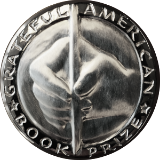A history lesson from a former Education Secretary
Houston, July 16 — Former Education Secretary Rod Paige says STEM education [science, technology, engineering and math] is an important focus in schools today, but teachers also need to re-engage their students in the study of American history.
“History is an important and integral part of the foundation upon which our education system is built. It provides a logical context for our lives as Americans. It offers an understanding of how to overcome adversity and how to learn from our mistakes. These are life lessons that are just as important as preparing students for jobs in the 21st Century world of bits, bytes and Boolean algebra,” he says.
Paige has always been a proponent of history as part of a well-rounded education. He also understands how “boring” it can be for students to study names, dates and timelines. He also recognizes the need to give students the tools they need to live and work in an environment that requires knowledge of science and math. “But these should not be deterrents for educators. Rather they should challenge teachers to breathe new life into their history lessons by using new tactics such as assigning their students to find and read historical works of fiction and non-fiction.”
Paige, who is on the Panel of Judges for the Grateful American™ Book Prize, is a firm believer in the tactic of hooking young learners via books that bring history to life. He notes that publishers long ignored Young Adult themes, particularly those with an historical context. “But now the YA genre is in vogue and the Prize was created to ensure a steady flow of new titles that can help teachers entice their charges to learn about the events and personalities that shaped our country from the nation’s founding right up to the present.”
Writer and educator Krista Raye put it this way: “Teaching history can sometimes be a tedious task. Students find it boring and cannot relate it to their own lives. They voice their frustrations by asking why they have to learn it. Using historical fiction in the classroom is one way to curb these complaints. History told in story form reaches students on a level that notes and text-reading simply cannot.”
As for STEM educators, Paige believes they can help by using their pedagogic skills to put technology into the context of American history. After all, it was Benjamin Franklin who helped establish the science of electricity way back in the 18th Century and it was the engineer and inventor Robert Fulton who, in the early part of the 19th Century, built the first commercially viable steamboat. In fact, the former slave-turned-botanist-and-inventor, George Washington Carver, may have been one of the first STEM educators when he taught at the Tuskegee Institute in the latter half of the 19th Century.
“History teaches us about ourselves—who we are, how the U.S. came to be a model for democracy in the world and why our melting-pot population has played and continues to play such an important role in the country’s development and success. If we don’t teach our children these things, they will be doomed to a lifetime of doubt and struggle,” Paige says.




